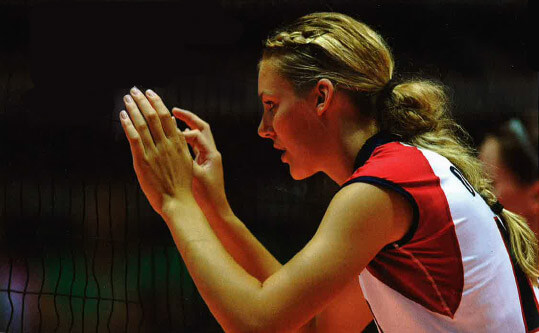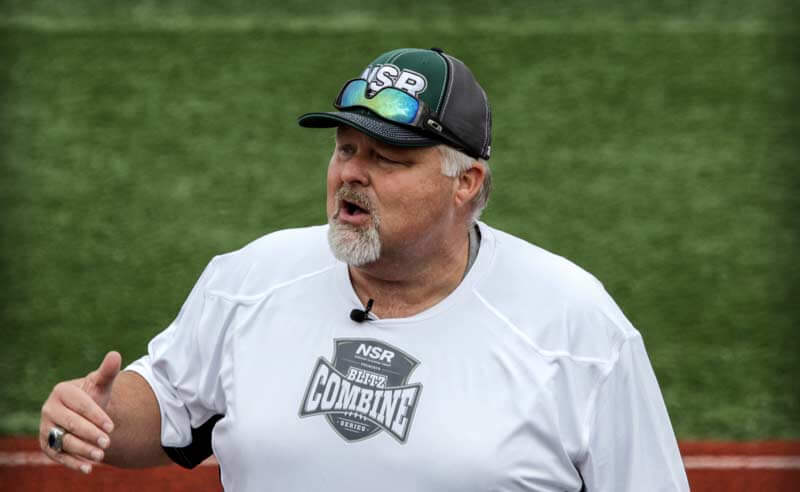Written by NSR's Robert Cagle (featured in Volleyball Magazine)

To be recruited or not to be recruited? That really is the question for hundreds of thousands of high school student-athletes in the United States. Most of these student-athletes answer that question with a loud "Yes! I want to be recruited!" These student-athletes have dreamed of playing volleyball in college since a very young age. After all, isn't that what most of the young competitive athletes today dream of doing? However, the reality of the situation is shocking to most student-athletes and their families. Contrary to what parents and student-athletes have been directed to believe, the probabilities of receiving a "full-ride" or even a "partial" volleyball athletic scholarship in college is less than 4%. More shocking is that less than 0.1% of high school athletes will ever have the opportunity to play volleyball at the professional level. Most parents and student-athletes do not realize the extreme limitations colleges and universities have had placed on their athletic programs by the NCAA and NAIA.
"...the probabilities of receiving a "full-ride" or even a "partial" volleyball athletic scholarship in college is less than 4%."
The NCAA has divided its participating colleges and universities into three divisions. A school is placed into one of these categories based on certain criteria. Size of the university, number of students enrolled, and athletic programs offered are just a few examples of how the NCAA decides in which division a college will be classified. NCAA Division I, NCAA Division II, and NCAA Division III are the three classifications that can be given to a school by the NCAA.

The NCAA has set recruiting guidelines and rules for each of these three divisions. The general public is often misinformed as to how many athletic scholarships are available from a particular university. The division classification dictates which rules and guidelines apply to a university. For example, an NCAA Division I university only has 13 athletic scholarships available for student-athletes participating in women's collegiate volleyball. The NCAA Division II universities only have 8 athletic scholarships to give each year. And keep in mind, an athletic scholarship is only good for one year. This means that a D1 university can have no more than a total of 13 scholarships given to its athletes in any one year. The NCAA Division III schools are different all together. These colleges and universities offer athletic programs to the students who qualify academically and want to compete in college athletics. Scholarship opportunities at the Division III level are not based on athletics. Academics are the driving force that determines if a student-athlete plays NCAA Division III sports.
Other than the NCAA, there are two additional governing authorities that oversee collegiate athletics. The NAIA or the National Association of Intercollegiate Athletics and the National Junior College Athletic Association provide structure and guideline for hundreds of colleges and junior colleges in the United Stares. The level of athletic competition at these schools can be outstanding. Often times, the larger NCAA Division I and Division II schools are recruiting the athletes competing at these two levels.
Recruiting is a tough and often times difficult process to maneuver through as a player and as a parent. Female high school student-athletes have the equally provided by Title IX. Title IX requires universities to offer a proportionate number of athletic scholarships to female athletes as it does to male athletes. In fact, there are 18 men's varsity sports sanctioned by the NCAA for athletics. The female athletes have additional sports, in that the NCAA has sanctioned 23 ladies varsity athletic sports for competition. What does this mean? It means there are great opportunities in college athletics for good, hard-working male and female student-athletes.
"...you must come to the realization that just being good is not good enough!"
With over 23,000 high schools and 3,000 colleges and universities in the United States, the need to adequately fill their athletic rosters with the best-qualified student-athletes possible is the college coaches' daunting task. The problem for student-athletes then becomes how to best get your credentials in front of these coaches for their review. When you look at the extremely small percentage of high school athletes going on to play college sports, you must come to the realization that just being good is not good enough!
Exposure is the key! Be involved as a parent and as a student-athlete. Many parents and student-athletes believe that playing in major showcase events and large club tournaments is the primary way to be seen by colleges. But that is simply a piece of the total recruiting puzzle. Most college volleyball coaches attend these large events so they can watch the players they already know about and have been in contact with. These coaches are not necessarily there to find new talent. They use the events to confirm the abilities of the kids they have been talking to, corresponding with and watching for as much as two or three years.

So the key to getting recruited and receiving multiple offers becomes simple. A college coach must know you and have evaluated you in order for you to be seriously recruited. That means these coaches want to know about the student-athletes early in their high school career. Student-athletes and parents must be aggressive in providing college coaches with the information they need in a timely manner and in a format they desire. Most parents and student-athletes do not understand this vital piece of the recruiting puzzle. Not having this piece of the recruiting puzzle means you never get the entire recruiting picture. What does this mean? There are opportunities that will be missed as a result of not completing the puzzle.
Don't stand by and let the recruiting process overlook you! Many outstanding high school athletes who have the talent and skill to play in collegiate volleyball get overlooked each year by colleges and universities because the student-athlete was not recognized as being a potential college player. Do not fall into that statistic! To be recruited or not to be recruited? It's up to you!
Coach Robert Cagle is a Director of Scouting and Recruiting for National Scouting Report. For answers to your individual questions, a free assessment of your athletic skills, or for further recruiting information, go to nsr-inc.com.